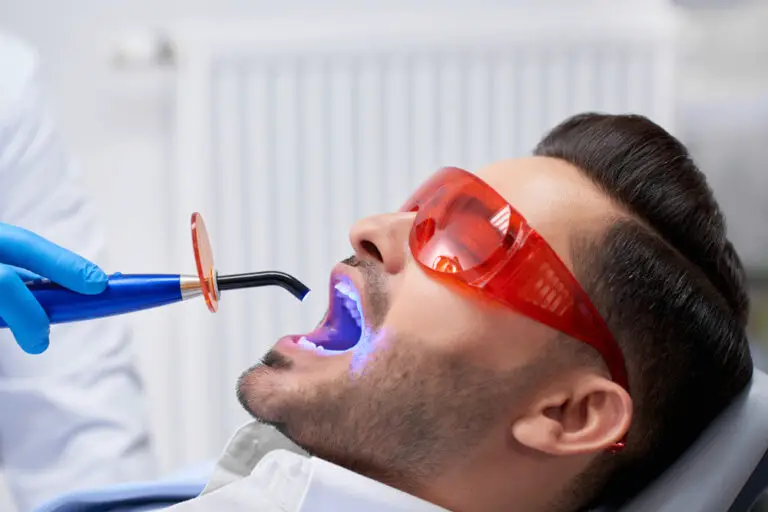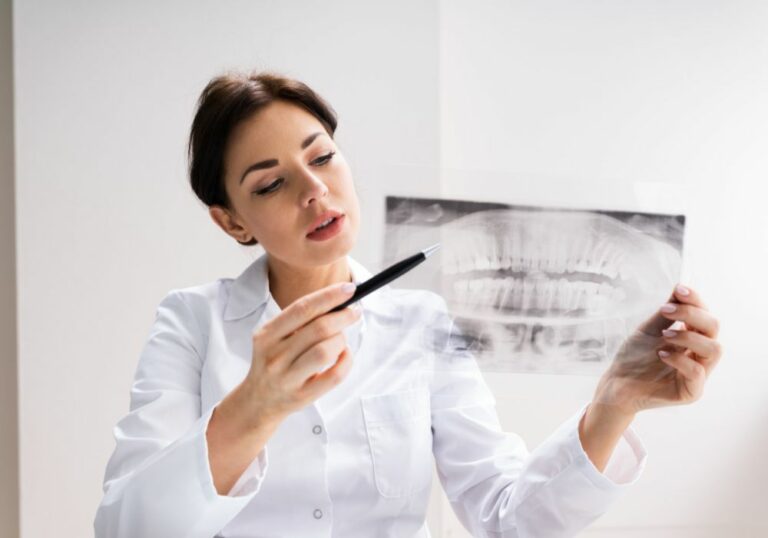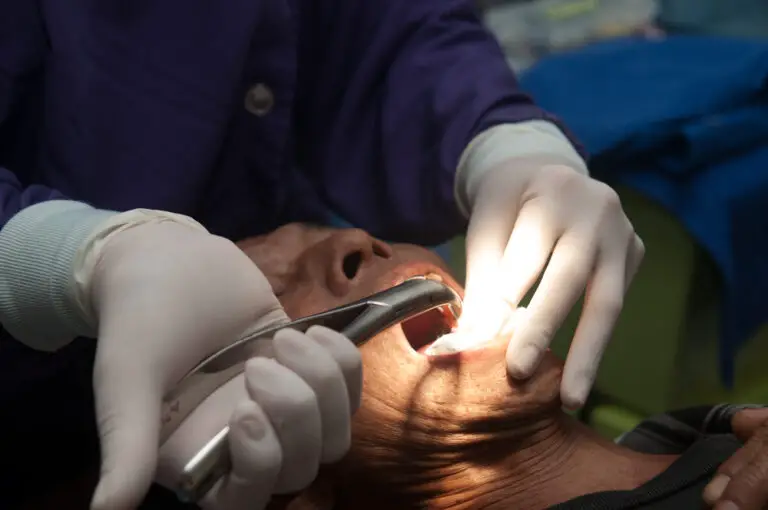For those with dental appliances like dentures, bridges, retainers, and implants, a common question arises when planning cremation: can false teeth be cremated with the body? There is much confusion over whether dental work needs to be removed before cremation.
This comprehensive guide examines cremation guidelines, details what exactly happens to dental appliances during the cremation process, and provides an overview of how common types of dental work withstand high temperatures. We will also look at concerns like mercury in old fillings and what happens to metals after cremation.
By the end, you will understand why dental appliances can safely remain in place and be laid to rest with your loved one during cremation.
Can You Be Cremated With False Teeth?
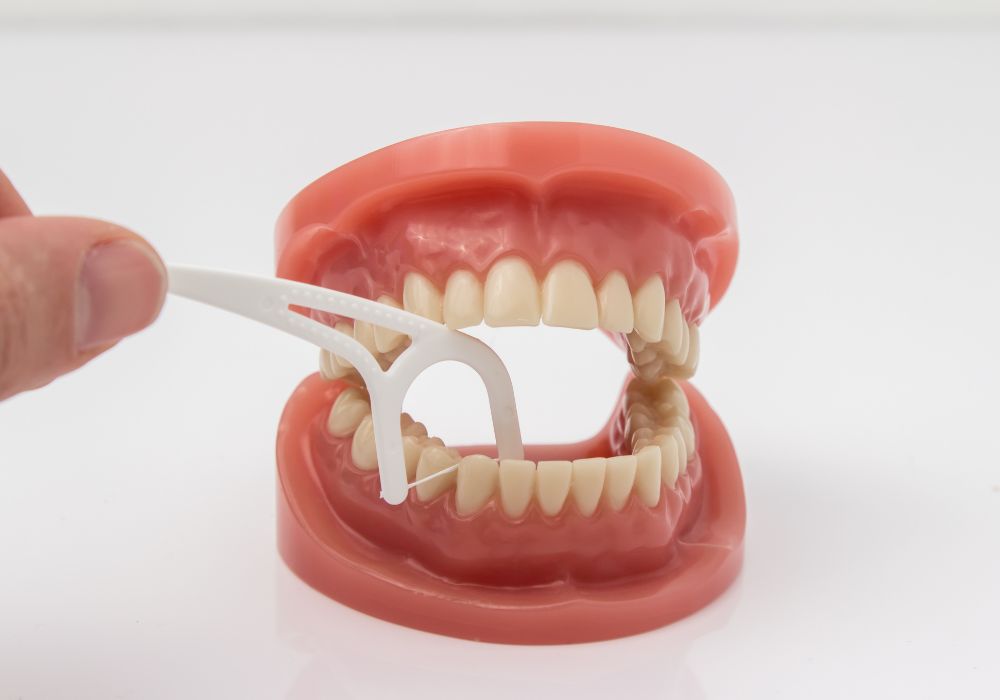
The Short Answer
Yes, dental items including dentures, bridges, implants, retainers and crowns can remain in the body for cremation. According to cremation guidelines, these dental appliances will withstand high temperatures and do not need to be surgically removed before cremation.
The porcelain and metal components are designed to be resistant to heat and pressure. Any non-combustible parts left over after cremation can be safely separated from the cremated remains and disposed of by the crematory.
Cremation Association Guidelines
The cremation industry follows best practice guidelines set by the Cremation Association of North America (CANA). CANA provides the following guidelines regarding dental work and cremation:
- Implanted items like dental appliances do not need to be removed prior to cremation.
- Dental work and other implants will not damage cremation equipment.
- The high heat will melt and decompose soft tissues allowing appliances to detach.
- Metals and ceramics will not vaporize and can be removed later.
Based on these guidelines, families can leave all dental work in place and avoid surgical removal prior to cremation.
Reasons to Leave Dental Appliances In Situ
There are several good reasons to leave dental equipment untouched before cremation:
- Avoids further trauma – Forcing removal of bridges, implants etc. can disfigure the deceased in an inhumane way.
- Upholds dignity – Appliance removal can be perceived as disrespectful to the body.
- Not required – Crematories do not require pre-cremation removal so unnecessary.
- Withstands heat – Dental work made to endure high temperatures without releasing toxins.
- Easy to separate – Metals and ceramics are easily filtered from the cremated remains.
Mercury in Older Fillings a Myth
You may hear outdated advice to remove mercury amalgam fillings before cremation. This is now considered a myth due to findings that mercury emissions from crematories fall within safe levels. Modern equipment also reduces these emissions to negligible amounts. Old fillings do not need to be disturbed before cremation.
Details of the Cremation Process

To understand what happens to dental work during cremation, let’s look at the intricate scientific processes involved and temperatures reached.
Stages of Cremation
A typical cremation involves the following stages:
- The deceased is placed in a combustible casket or shroud.
- The container is put within the cremation chamber.
- Intense heat is applied for 1.5-3 hours reaching 1400-1800°F.
- The body and casket are reduced to basic elements and compounds.
- Remaining bone fragments are swept from the chamber.
- Metals and non-combustibles are removed either by hand or magnet.
- Bone pieces are pulverized into a uniform powder.
During stages 3 to 5, dental appliances will begin separating from soft tissues and may partially melt but remain intact due to resistant materials. The appliances will detach from bone during the final processing stage.
Heat Effects on the Body
The intense heat of cremation has the following effects:
- Vaporization of water and organic compounds like fats and proteins
- Oxidation and release of free carbon molecules
- Calcium phosphate in bones transitions to calcium oxide
Soft tissues like ligaments and gums holding dental appliances in place will burn off. The metals and ceramics in dental work will not oxidize or decompose at typical cremation temperatures.
Temperatures Inside the Chamber
Cremation chambers reach temperatures between 1400-1800°F. For reference:
- Aluminum melts at 1220°F
- Gold melts at 1945°F
- Iron liquefies at 2800°F
Common dental metals like gold, stainless steel and titanium withstand over 2500°F. Dental ceramics remain stable above 2000°F. This makes appliances resistant to cremation heat.
Modern Emissions Controls
Modern crematories have EPA-standard filtration to capture emissions of mercury, dioxins and other particulates from the chamber. This prevents release of toxins into the air and environment at unsafe levels when amalgam fillings are present. Outdated concerns over fillings releasing high mercury levels during cremation no longer apply.
How Dental Appliances Withstand Cremation
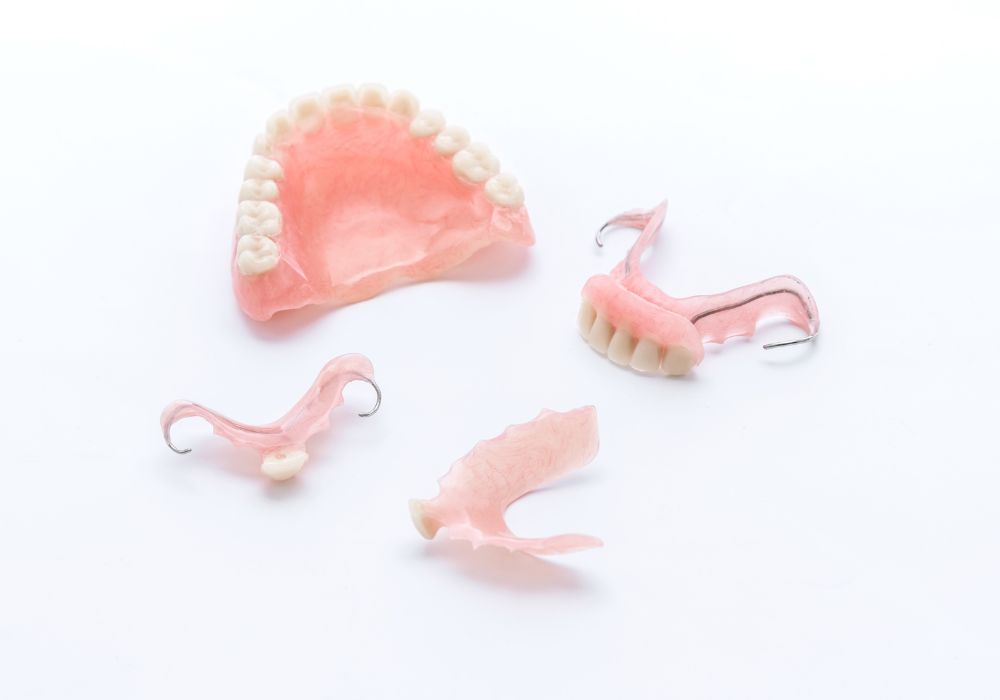
Let’s examine how the typical materials make dental appliances impervious to cremation temperatures:
Dentures and Partials
Complete dentures and partials have acrylic resin bases holding porcelain teeth in place.
- Acrylic resin: Withstands over 400°F before softening
- Porcelain teeth: Remain inert above 2000°F
The acrylic base will eventually burn away leaving the porcelain teeth to detach and be filtered out later. Partial denture frameworks are made from chrome cobalt or titanium to withstand high heat.
Dental Implants
Implants consist of titanium or zirconia fixtures anchored in the jawbone with an abutment connecting to a crown.
- Titanium: Melts above 3000°F
- Zirconia: Stable above 2500°F
The inert metals allow implants to remain fused in bone through cremation without releasing toxins. The attached crowns may detach.
Bridges
Fixed bridges use porcelain bonded to a cast gold alloy substructure.
- Gold alloys: Contain silver, copper and platinum. Melt above 2500°F.
- Porcelain: Remains intact above 2000°F.
The metal substructure avoids warping while the porcelain may eventually disintegrate from the heat. Bridges may separate from natural teeth.
Crowns and Fillings
- Porcelain crowns withstand temperatures above 2000°F before vitrifying.
- Gold crowns made from alloys are stable through cremation.
- Silver amalgam fillings with tin, copper and mercury do not decompose.
- Tooth-colored composite resins burn away slowly above 300°F.
The materials ensure dental crowns, onlays and fillings remain contained through cremation.
What Happens After Cremation?
We’ve seen how dental appliances withstand the intense heat. Now let’s look at how the non-combustible pieces are removed after cremation.
Metals Retrieval
Once the cremation chamber cools, the skeletal remains are swept out. Larger metal objects like partial denture frameworks are picked out by hand. Magnets grab smaller metallic pieces like implant abutments and fillings.
Some particles may evade filters if welded to bone fragments. Tiny amalgam filling particles pose no hazard if ingested or inhaled.
Pulverization
The bone material undergoes pulverization in a processor to achieve a uniform consistency. The powdered remains are then placed in an urn or temporary container.
This pulverization allows any remaining dental ceramics to be intermixed. Metals are ground into harmless microscopic sizes.
Disposal of Non-Combustibles
Crematories must dispose of removed non-biological materials responsibly. Metals are recycled where possible. Other dental alloys, ceramics and composites are discarded as medical waste.
These procedures ensure appliances are safely processed and only pure cremated remains go to the family.
Common Questions About Cremation With Dental Work
Let’s review some frequently asked questions to clarify if dental appliances require removal prior to cremation:
Do dental crowns need to be taken out before cremation?
No, there is no need to remove crowns or caps before cremation. Porcelain, ceramic and metal crowns withstand temperatures exceeding 1800°F without releasing toxic compounds. The crematory’s processing will remove any non-combustible parts.
Can you be cremated with permanent retainers?
Yes, metal permanent retainers cemented behind the teeth do not need removal. Retainers are made from inert stainless steel or titanium that will not vaporize or melt during cremation. The metals will later be separated from remains.
What about dental posts or pins in root canals?
Metal posts and pins inside treated root canals can safely remain for cremation. These stainless steel or titanium posts are impervious to heat. Crematories are equipped to extract any metals integrated into bone fragments after cremation.
Isn’t mercury from fillings released when cremated?
Modern crematory filters prevent toxic mercury release from amalgam fillings. Emission studies show mercury levels fall below EPA regulations for safety. Amalgam fillings do not need removal for cremation due to these strict emissions standards.
How do crematories remove the metals after cremation?
Larger metallic objects are removed by hand once the cremated remains are swept from the chamber and allowed to cool. Magnets grab smaller metal pieces during processing. Some minute metal shards may persist but are safe if ingested or inhaled.
Cremation Allows Loved Ones to Rest Peacefully
Cremation offers many benefits – it is affordable, compact, and environmentally-friendly. Cremated remains can be kept in urns, buried or scattered in meaningful locations.
Knowing that dental appliances will safely endure cremation lets loved ones rest peacefully without disruptive removal procedures. The durable materials used in dentistry are designed to withstand high heat and pressure.
Modern crematories can then process the non-combustible metals and ceramics to leave only pure human ashes. By understanding the science involved, families can choose cremation with confidence.

